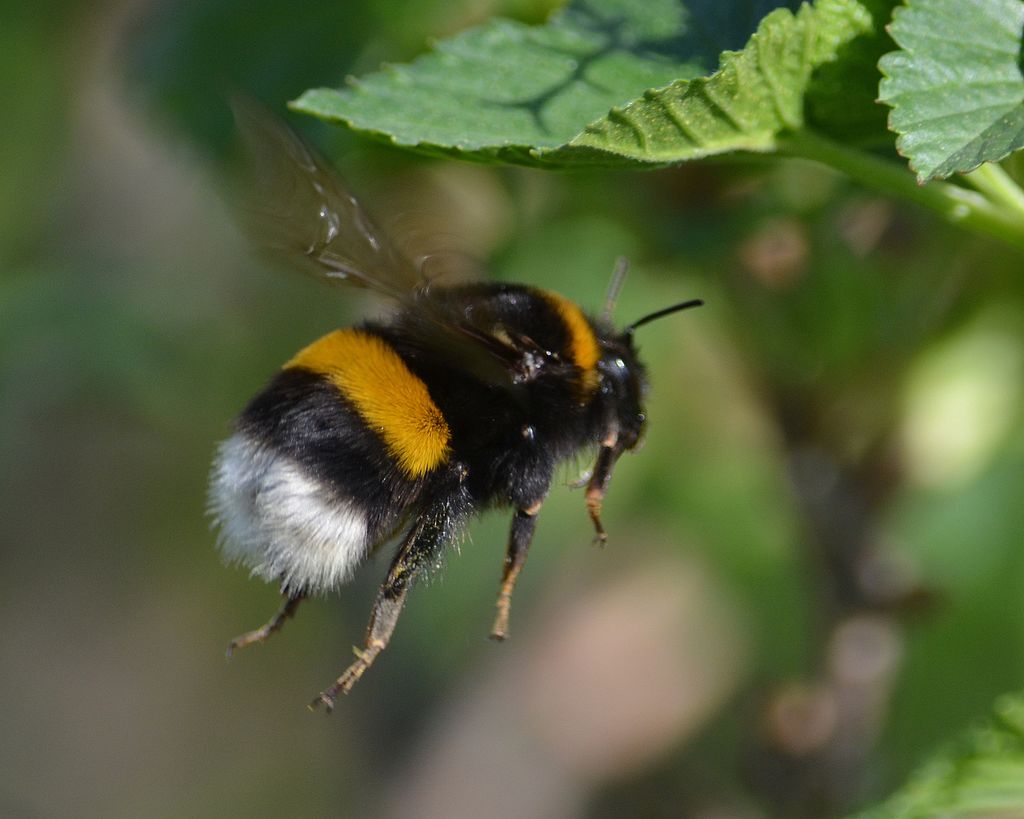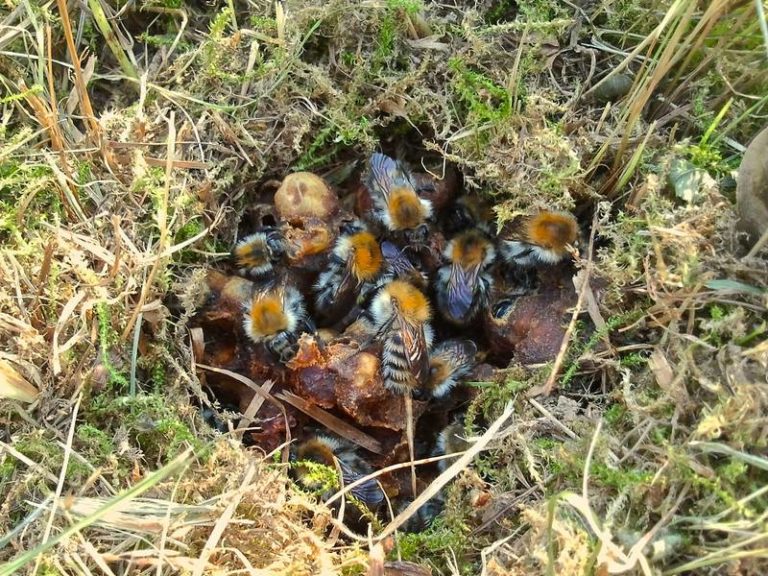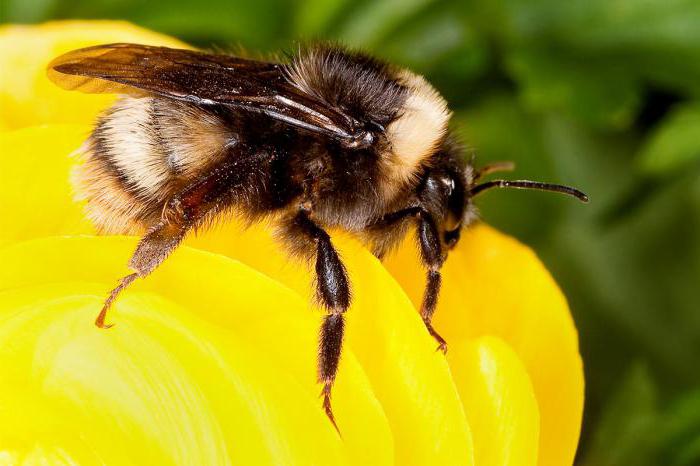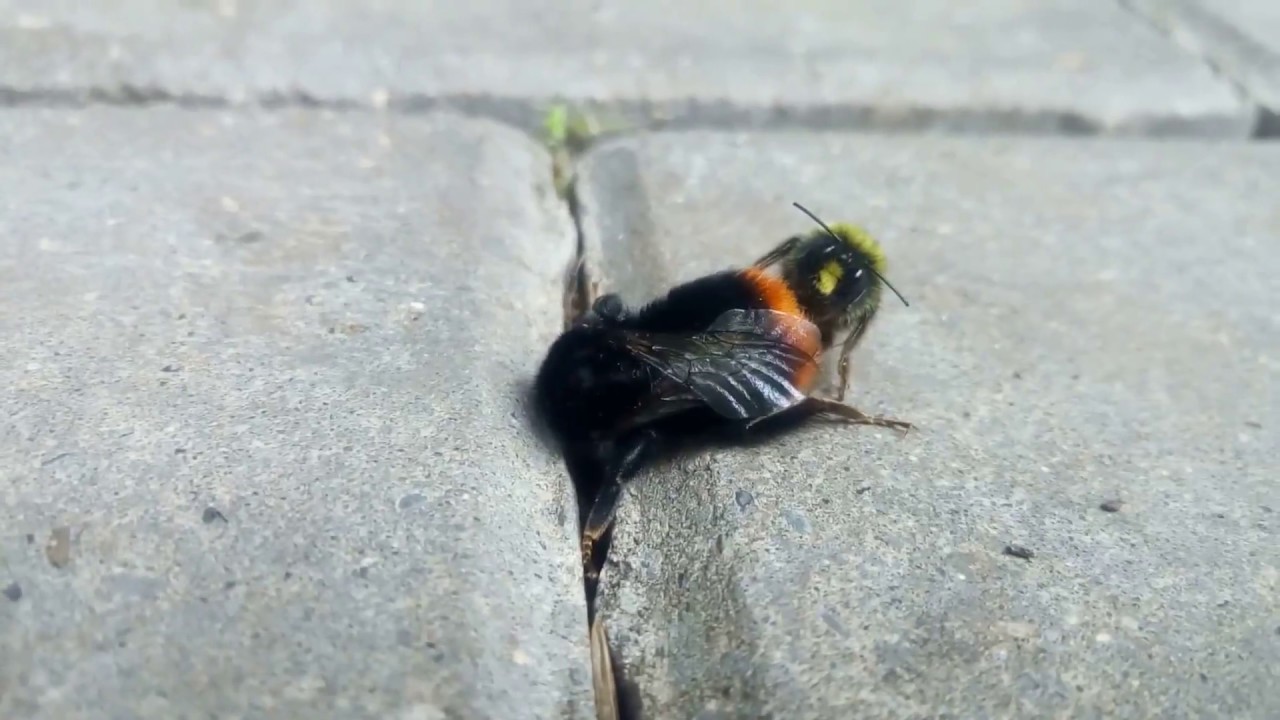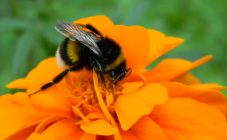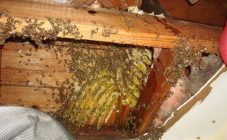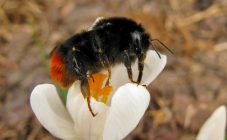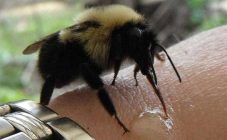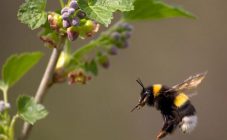Content:
Bumblebees are arthropod insects that belong to the winged subclass and are distinguished as a separate genus of bumblebees. The insect got its name thanks to the sound they make when flying.
General information
In their appearance and lifestyle, bumblebees are very similar to bees, but there are also unique differences. The bumblebee differs significantly from the bee in its size: they are much larger. The body length of this insect reaches 2.5 cm, but there are representatives much larger.
Males are larger than females, they have small antennae on their heads. The largest are working females, they are also endowed with a stinger. The body is covered with dense hairs. Most often, the back of insects is dark in color and has lighter stripes - orange or red.
The sting of the bumblebee is black and has no chipping. The shins are padded at the back with spurs. Bumblebees have powerful jaws that can gnaw through vegetation.
Where bumblebees live in nature
It is rather difficult to answer the question of where bumblebees live. It is easier to say where they do not live, since the insect is able to adapt to different climatic conditions. They can be found on any continent except Antarctica. In the Northern Hemisphere, bumblebees are found in temperate latitudes. But the habitat extends even far beyond the Arctic Circle. They can be found in the tundra, Alaska, Greenland, Spitsbergen. Also, the insect can be easily found in the mountains.
They are less common in warm countries located in the tropics. But Asia is considered the homeland of bumblebees, here they live in most regions.
Bumblebees are among the most hardy frost-resistant insects. Due to the peculiarity of thermoregulation, bumblebees easily tolerate cold, but do not like the tropics. Their body temperature reaches 40 degrees, which exceeds the temperature outside by about 20 degrees. This increase in body temperature occurs due to the rapid contraction of muscles, while the wings themselves do not move. It is because of this feature that such a sound is obtained. At the moments when the bumblebee hums, it warms up, when it stops, the body begins to cool down.
Features of the location of the hive
Bumblebees build their hives in different ways. They can be located both underground and above and on it.
A hive under the ground
Most of the insects of this species locate their nests underground. They use holes of rodents and moles for dwelling. It is the smell of mice that attracts female bumblebees. In such a nest, there is always material for insulation: wool, grass, and so on.
There is a list of insect species that prefer to nest underground:
- Garden;
- Large earthen;
- Stone;
- Norny;
- Underground;
- Motley.
Nests on the ground
Some bumblebee species choose objects on the surface of the earth to build their nests. They build their dwellings on the ground. All available materials are used to build hives: hay, straw, grass, plows, the remains of abandoned bird nests.
The prominent representatives who build their hives on the ground are:
- Field;
- Mozova;
- Forest;
- Shrenka;
- Lugovoi.
Nests above the ground
There are several species of bumblebees that build their nests in burrows, hollows, birdhouses, under roofs. These species include urban bumblebee, yonellus, hollow.
Also in nature, there are several types of insects that can arrange hives, both above the ground and in the ground.
Building hives
The shape of the hives in and above the ground that bumblebees create depends on the cavity where they are located. Ground nests are most often made in the form of a sphere. Dry moss, grass and wax are used for insulation and strengthening. The latter is a product of the vital activity of the insects themselves. The wax is produced by special glands in the abdomen. On it, thin strips of wax are formed, which the insect in the mouth chews to a state of pliability. You can do whatever you want with a soft plastic material. The founder of the family is the first to allocate wax, then working individuals take on this role. The result is a wax dome that protects the bumblebee nest from moisture penetration. In a similar way, the entrance is masked so that enemies or cuckoo bumblebees do not get inside.
Life span
Another question that many who study buzzing insects are interested in is how long a bumblebee lives. The life span of one bumblebee is very short. On average, it does not exceed 2 weeks.
Insects die for completely different reasons, but most often they simply wear out themselves, trying to collect as much nectar as possible. The life span of males does not exceed a month; they die soon after mating. Young fertilized females manage to live the longest, but they spend most of their time sleeping in winter. After mating, future queens go to winter, males die. They then create a new nest, lay eggs, feed the larvae, and die.
Insect wintering
Studying the features of the life of these insects, you need to know how the bumblebee hibernates in order to clearly understand its life cycle. The bumblebee family lives only in the summer, only young queens remain for the winter. But after hibernation, it is difficult to see them, since they have been building their new nest since early spring. In arranging a new home, all available material is used: moss, dry grass, down. It's still cold outside, so the female needs to actively flap her wings to maintain her body temperature. Nests must be fully prepared before eggs are laid.
New individuals appear from the laid eggs, which are engaged in collecting nectar, pollen and expanding nests. In the fall, the entire family dies, except for young fertilized queens, which will winter, and in the new spring, the bumblebee's life cycle will begin in a new circle.
The answer to the question where bumblebee queens winter is ambiguous. Insects look for secluded places: cracks in trees, minks, hollows, cracks in the walls of houses and other buildings. If a suitable safe place is not found, the female can dig a hole in the soil on her own. With a cold snap, the insect falls into a state of numbness and remains in it until warming in spring. The state of sleep or numbness is a state of how bumblebees hibernate in nature.
Features of bumblebee nests in the ground
After wintering, the fertilized uterus begins to engage in construction. Most often she places the bumblebee hive in the grass or between stones.Often, holes and holes dug by small rodents are selected.
The first dwelling, which was built by the queen or the founder of the family, is an irregular oval cell. They are made from brown or red wax. At the bottom of each wax cell, the female lays 6 eggs, and a little honey and pollen are also placed in them to feed the larvae that have appeared. Only the first cells in the nests of bumblebees are made of wax; subsequently, for such purposes, the empty cocoons of pupae that have already hatched are used. All created cells that do not contain larvae are filled with coarse honey and pollen. Some of the cells with honey and pollen remain intact for a long time, they are intended for bad weather, when insects cannot fly out for food.
As the larvae grow, the walls of the cells expand. To prevent the dwelling from falling apart, the uterus is constantly repairing the walls. When the family expands, worker bees will help her with repairs. When the time comes, the larvae pupate, inside the cocoon they turn into adults. After the end of the process of forming a new insect, the uterus gnaws through the walls of the cocoon so that a young generation appears. The first bumblebees after laying eggs appear on days 25-27.
Interesting Facts
Bumblebees are very interesting insects. Biologists, observing them, noticed many interesting facts:
- On hot days, bumblebees can often be seen fluttering their wings. Similarly, they arrange artificial ventilation to reduce the temperature in the home.
- Today there is a separate branch of agriculture - bumblebee breeding. Insects are raised to speed up the natural pollination of crops.
- Bumblebee venom does not harm a person as much as bee venom, since the sting does not remain inside. But an insect can sting many times.
- While driving, representatives of these insects develop speeds of up to 18 km / h.
- Before wintering, the female can independently dig a mink for herself in order to winter, but in the spring, when it comes time to create a nest, she forgets about her ability and looks for ready-made shelters to create a hive.
Bumblebees are very hardworking insects that are constantly on the move. Throughout the season, they build a new home in order to give life to a new generation at the end of the year, then perish themselves. Very few people manage to live such a short period and do so many things.
